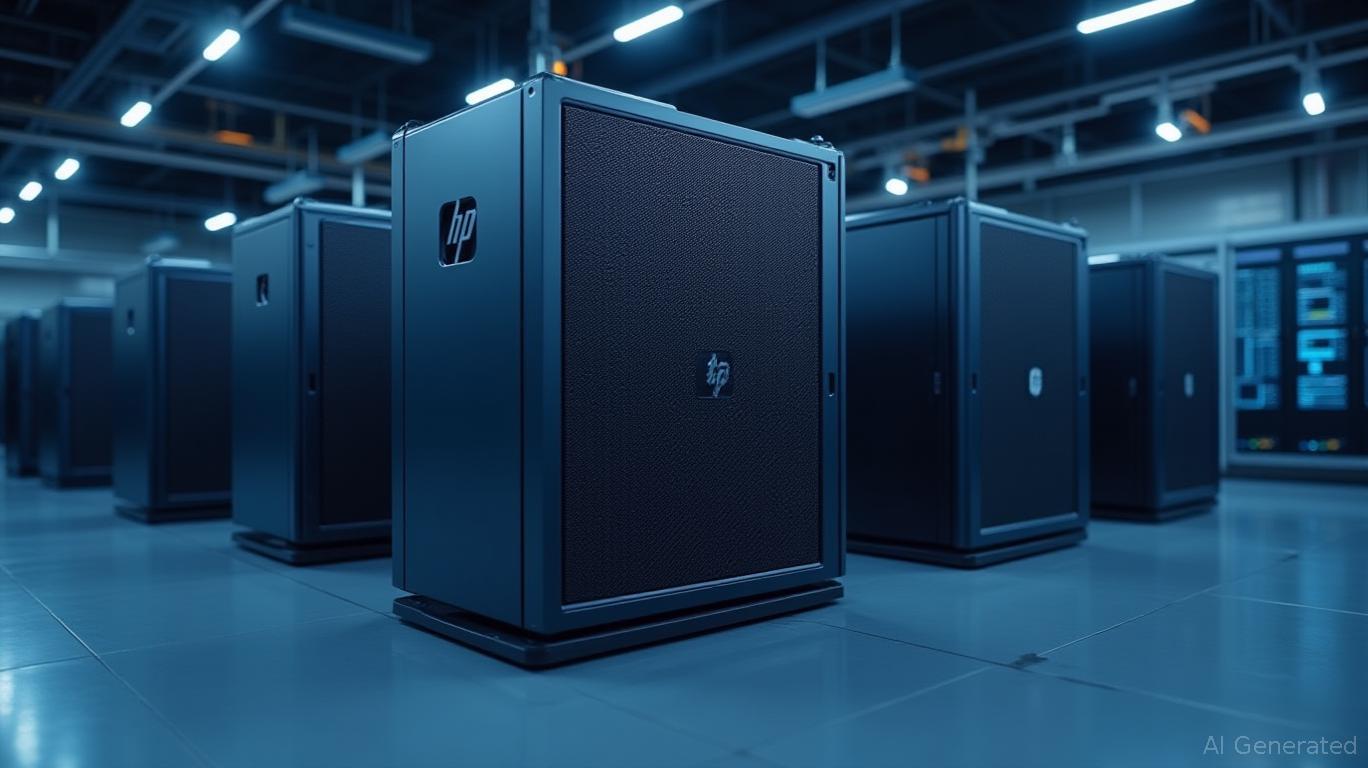HPE's Nonstop Compute: A Fortress in the Fog of AI and Economic Uncertainty
The enterprise tech landscape is in flux. As artificial intelligence (AI) infrastructure demands reshape industries, companies are scrambling to balance innovation with reliability. In this environment, few firms stand to benefit as much as
Enterprise (HPE), whose newly launched NS5 X5 and NS9 X5 Nonstop Compute systems represent a masterstroke in high-availability computing. These systems are not just upgrades—they're a strategic bet that HPE's legacy of fault-tolerant infrastructure can thrive in an era where downtime is intolerable, and data is sacred.The Technical Edge: Why the NS5/NS9 X5 Are Game-Changers
The NS5 X5 (entry-level) and NS9 X5 (flagship) are engineered to deliver 99.999% uptime—the gold standard for mission-critical applications—while doubling memory capacity and tripling network bandwidth over prior generations. The NS9 X5, for instance, now supports 8 TB of RAM and 32 Gbps Fibre Channel, enabling it to handle multi-plant manufacturing workflows or real-time fraud detection systems with ease.

What makes these systems revolutionary is their backward compatibility. They can seamlessly integrate with HPE's last two generations of Nonstop hardware, eliminating costly forklift upgrades. This is critical for industries like finance and manufacturing, where replacing legacy systems is a non-starter.
Capturing the $100B+ Mission-Critical Workload Market
The global market for high-availability IT infrastructure is booming, fueled by regulations (GDPR, HIPAA) and the digitization of industries. HPE's Nonstop systems are now positioned to capitalize:
- Finance: Banks and payment processors need systems that can survive cyberattacks, power 24/7 transaction processing, and meet PCI-DSS compliance. The NS9 X5's multi-factor authentication (MFA) and 15% performance boost over predecessors make it a clear leader.
- Manufacturing: Smart factories require systems that can coordinate robotics, inventory, and quality control without fail. The NS5 X5's 10G Ethernet and 512 GB memory are ideal for mid-sized facilities, while the NS9 X5 scales to handle global supply chains.
HPE's GreenLake consumption-based model, which lets customers pay-as-they-go for Nonstop systems, further accelerates adoption. This model has already driven 20% year-over-year growth in HPE's cloud business, and the Nonstop line will amplify that momentum.
Near-Term Risks: Guidance Misses and Juniper Integration
No investment is risk-free. HPE's stock has stumbled in recent quarters due to missed revenue guidance, partly from delays in its Juniper Networks integration. Juniper's networking assets are critical to HPE's vision of bundling Nonstop Compute with AI-ready storage and edge solutions. However, integrating two complex organizations has strained execution.
Analysts also caution that the Nonstop systems' success hinges on customer adoption rates. While early demand is strong, enterprise IT budgets remain tight, and competitors like Dell Technologies and IBM are sharpening their high-availability offerings.
Long-Term Catalysts: GreenLake, AI, and the “Five 9's” Premium
The real upside lies in HPE's ability to monetize three secular trends:
- GreenLake's Recurring Revenue: As more customers opt for consumption-based Nonstop systems, HPE's revenue becomes stickier. The GreenLake model now accounts for 23% of HPE's revenue, up from 18% in 2023.
- AI Partnerships: HPE is quietly partnering with AI firms to embed Nonstop systems into data pipelines, ensuring reliability for models that can't afford downtime. Early wins include a $250M deal with a European bank for AI-driven fraud detection.
- The “Five 9's” Premium: HPE's systems command a 30–40% price premium over standard servers due to their uptime guarantees. As industries like healthcare and energy digitize, this premium will widen.
Valuation: A Dividend-Powered Safety Net at a Bargain
HPE's stock trades at a forward P/E of 9.7, far below the S&P 500 average of 18.8. The 3.17% dividend yield—sustained by a conservative 27% payout ratio—provides a cushion in volatile markets. With $3.2B in cash and a net debt-to-EBITDA ratio of just 1.5x, HPE is financially robust enough to weather near-term headwinds.
Conclusion: Buy the Dip, Trust the Reliability Play
HPE's Nonstop Compute systems are more than a product line—they're a testament to the enduring demand for reliability in an AI-driven world. While risks like Juniper integration and execution hiccups linger, the long-term tailwinds of mission-critical workloads, GreenLake's growth, and undervalued shares make HPE a compelling buy.
Action to Take: Buy HPE stock at current levels, with a price target of $22–$25 over the next 12–18 months. Pair this with a 3–6 month hold, and let the dividends compound. In an era where failure isn't an option, HPE's Nonstop systems are the ultimate insurance policy.
Disclosure: This analysis is for informational purposes only and not personalized financial advice. Always conduct your own research before making investment decisions.

Comments
No comments yet